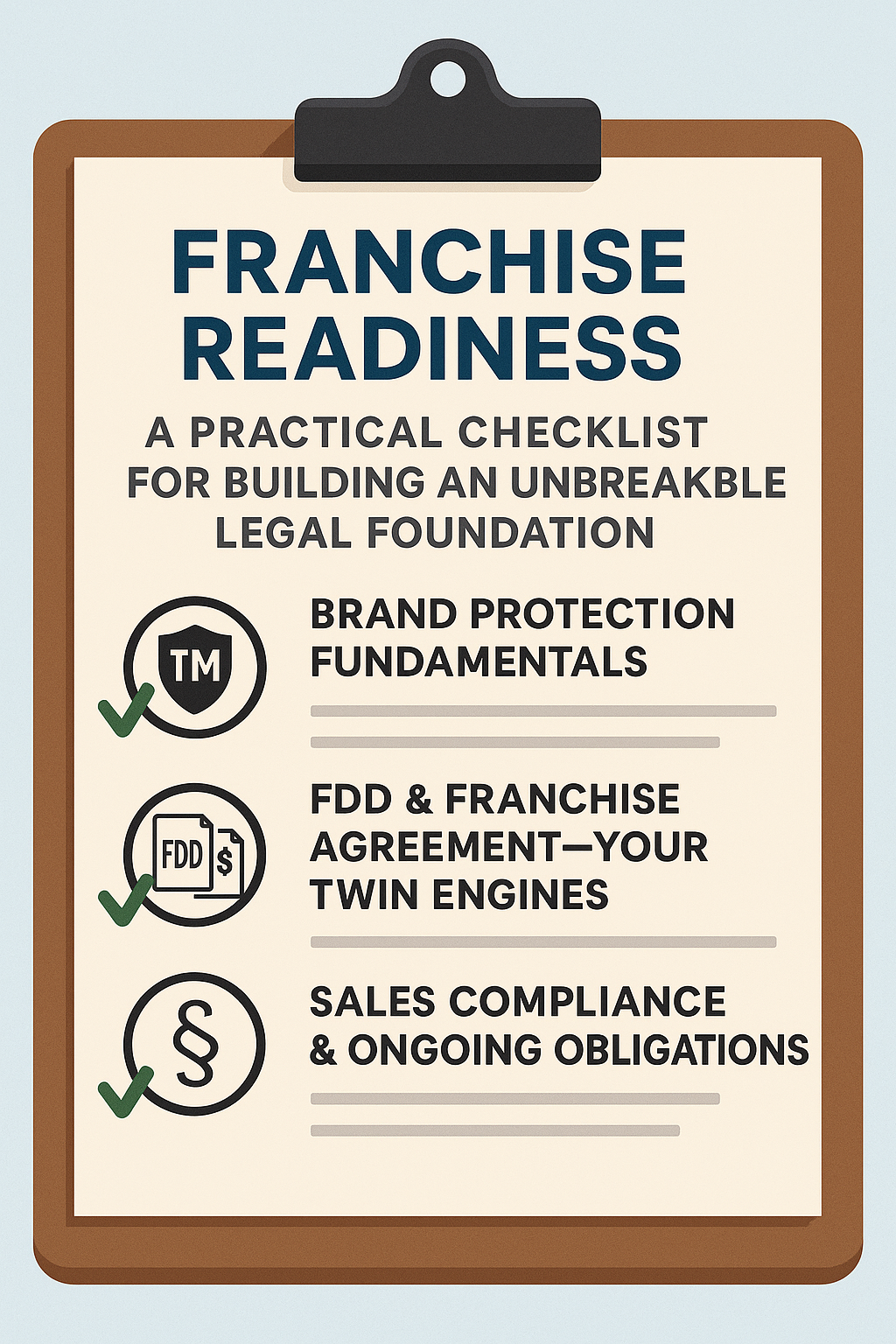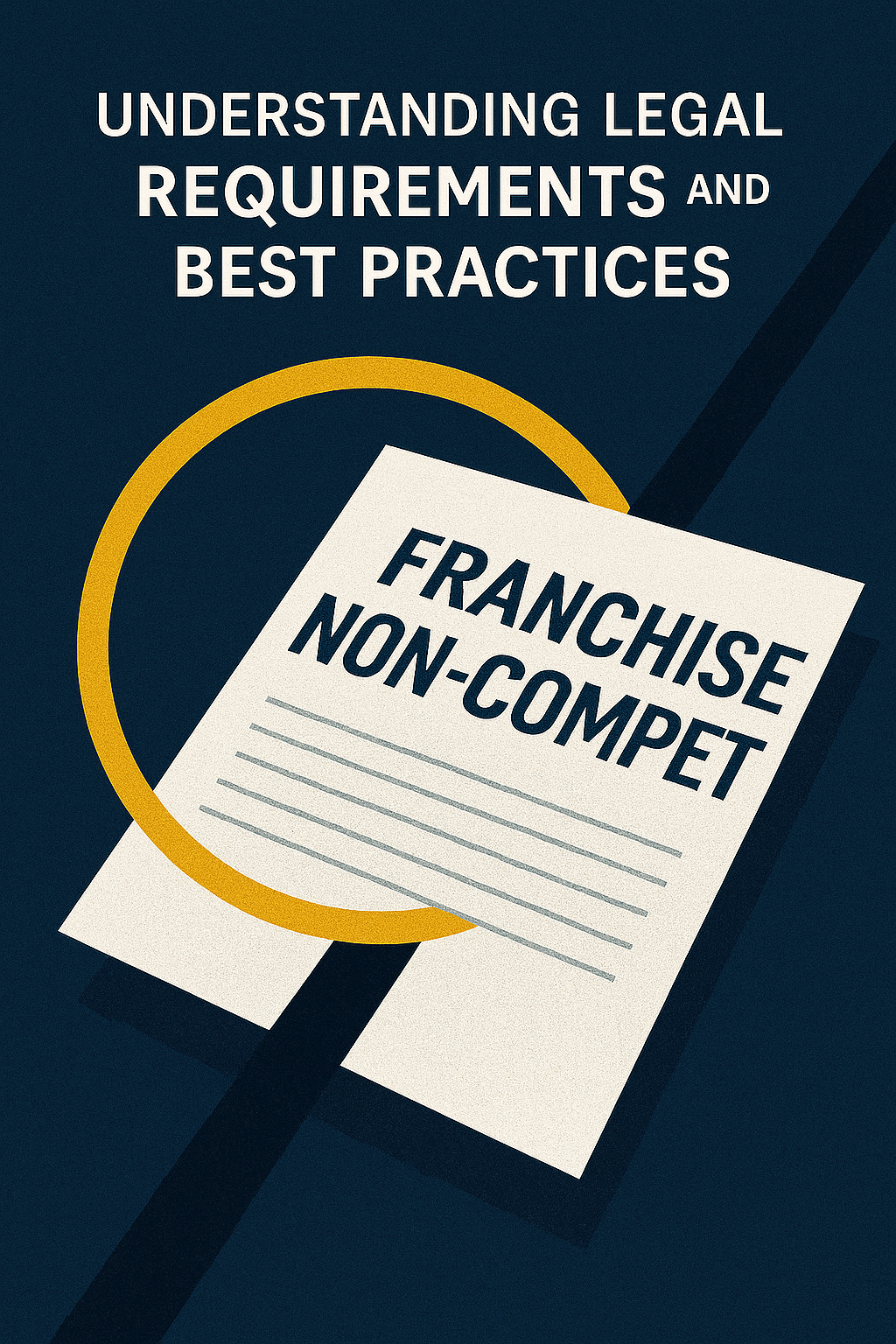Crafting a comprehensive franchise disclosure document (FDD) is a crucial step for franchisors to ensure transparency and compliance with legal regulations. This document not only provides potential franchisees with essential information about the franchise opportunity but also protects the franchisor from potential litigation. In this comprehensive guide, we will explore the key aspects of creating an effective FDD, including understanding its importance, legal requirements, document structure, key components, regulations compliance, drafting tips, common mistakes to avoid, and the role of financial statements.
Understanding the Importance of a Franchise Disclosure Document (FDD)
A franchise disclosure document serves as a valuable resource for potential franchisees who are considering joining your franchise system. It provides them with relevant information about your business model, history, financial performance, franchisee obligations, and the support they can expect from the franchisor. By disclosing this information upfront, you establish trust and build a foundation of transparency with prospective franchisees.
Furthermore, an FDD helps you to comply with legal requirements set forth by the Federal Trade Commission (FTC) and state regulations. Failure to provide a comprehensive and accurate FDD can result in severe legal consequences, including fines, penalties, and even the shutdown of your franchise operation. Therefore, it is crucial to craft an FDD that meets all legal requirements to protect yourself and your franchise system.
The Legal Requirements for Franchise Disclosure Documents
Franchise disclosure documents are subject to numerous legal requirements, both at the federal and state levels. The FTC Franchise Rule and various state laws outline the specific information that must be included in the FDD and the format in which it should be presented.
Some of the key elements that must be covered in an FDD include the franchisor’s background and experience, the franchise’s financial performance, the initial and ongoing fees, the franchisor’s obligations and support, and any litigation history or bankruptcy filings. Each state may also have additional requirements that franchisors need to consider.
How to Structure Your Franchise Disclosure Document for Maximum Clarity
To ensure maximum clarity and comprehension, it is vital to structure your FDD in a logical and organized manner. The document should be divided into specific sections, each addressing a different aspect of the franchise opportunity. This structure allows potential franchisees to navigate the FDD easily and locate the information they need.
Typically, an FDD includes sections such as the cover page, table of contents, a summary of the franchisor’s business, the franchise offering, the franchisee’s obligations, fees and expenses, the franchisor’s assistance and training, the franchise and territory details, intellectual property rights, financial statements, legal disclosures, and any other relevant information.
Within each section, subheadings and numbered items are used to categorize the information further, making it easier for potential franchisees to find and reference specific details. It is important to maintain consistency in the structure of your FDD and use clear headings to guide readers through the document.
Key Components to Include in Your Franchise Disclosure Document
While the specific content of an FDD may vary depending on the franchise system and applicable laws, there are several key components that must be included to provide potential franchisees with a comprehensive understanding of the opportunity.
First, it is essential to provide a clear overview of your business model, history, and the franchise’s unique value proposition. This section should highlight why your franchise stands out and why potential franchisees should consider investing in it.
Second, you must include detailed information about the initial and ongoing fees, including the franchise fee, royalties, advertising contributions, and any other financial obligations. Transparency in this area is crucial to manage franchisee expectations and avoid disputes down the line.
Furthermore, your FDD should provide comprehensive details on the support and training that you, as the franchisor, will provide to assist franchisees in operating their businesses successfully. This includes information on initial training programs, ongoing assistance, marketing support, and any proprietary systems or technology you offer.
Additionally, it is vital to disclose information about the franchisee’s obligations and any restrictions they must adhere to. These obligations may include requirements related to site selection, hours of operation, pricing restrictions, and product or service quality standards. By providing clear guidance on expectations, you can ensure consistency across your franchise system.
Other key components that should be covered in your FDD include details about the franchise territory, intellectual property rights, financial statements, litigation history, renewal and termination terms, dispute resolution processes, risk factors, and any additional information required by state regulations.
Navigating the Complexities of FDD Regulations and Compliance
Complying with the various FDD regulations and legal requirements can be complex and challenging. Franchisors must familiarize themselves with the FTC Franchise Rule, as well as state-specific laws that apply to their franchise offering.
It is advisable to seek legal counsel from an experienced franchise attorney who specializes in FDD preparation and compliance. They can guide you through the regulations, help you understand the specific requirements applicable to your franchise, and ensure your FDD meets all necessary legal standards.
Regularly monitoring regulatory changes is also crucial, as FDD requirements may be updated over time. By staying informed and proactively addressing any necessary amendments to your FDD, you can protect your franchise system and maintain compliance with the law.
Tips for Drafting Clear and Concise FDD Sections
When drafting the content for each section of your FDD, it is important to focus on clarity and conciseness. Long, convoluted paragraphs may confuse potential franchisees and hinder their understanding of the information presented.
Instead, aim for clear and concise language that is easily comprehensible. Use bullet points, tables, and charts wherever possible to present information in a visually appealing and digestible format. Checklists can also be beneficial to highlight specific requirements or steps that franchisees need to follow.
Add relevant headings and subheadings to break up the text and guide readers through the document. This makes it easier for potential franchisees to locate the information they need and navigate the FDD with ease.
Common Mistakes to Avoid in Franchise Disclosure Document Preparation
Preparing an FDD can be a complex process, and it is important to avoid common mistakes that could undermine its effectiveness or compliance. Some common pitfalls to avoid include:
1. Inaccurate or incomplete information: Ensure that all information provided in your FDD is accurate, relevant, and up-to-date. Omitting or misrepresenting key details can lead to legal troubles and damage your franchise’s reputation.
2. Failure to update the FDD: Your FDD should be regularly reviewed and updated to reflect any changes in your franchise system, such as fee updates, new support programs, or legal obligations. Outdated information can mislead potential franchisees and expose you to legal risks.
3. Lack of clarity: Using technical jargon or convoluted language can make it difficult for potential franchisees to understand your FDD. Aim for simplicity and clarity, ensuring that the language used is easily comprehensible to a wide audience.
4. Insufficient financial disclosures: Providing accurate and complete financial statements is essential to give potential franchisees insight into the financial health of your franchise system. Inadequate financial disclosures can raise doubts and deter potential investors.
By avoiding these common mistakes, you can create an FDD that is accurate, compliant, and enhances the credibility of your franchise system.
The Role of Financial Statements in Your Franchise Disclosure Document
Financial statements are a critical component of your FDD, as they provide potential franchisees with insights into the financial performance and stability of your franchise system. These statements include balance sheets, income statements, and cash flow statements, which demonstrate the financial health and viability of your business.
When preparing financial statements for your FDD, it is essential to follow generally accepted accounting principles (GAAP) and provide clear explanations of each item presented. Potential franchisees will use these financial statements to assess the profitability and growth potential of your franchise opportunity.
While financial statements can be complex, it is essential to present them in a manner that is comprehensible to non-financial individuals. Consider including explanatory notes and numerical breakdowns to help potential franchisees interpret the data effectively. This transparency builds trust and establishes your franchise’s credibility.
Ensuring Transparency and Accuracy in Your FDD’s Item 19: Financial Performance Representations
Item 19 of the FDD provides an opportunity for franchisors to disclose the financial performance of their franchised outlets. This can be a powerful tool to attract potential franchisees, as it allows them to assess the revenue potential of your franchise opportunity.
While the FTC does not mandate the inclusion of financial performance representations in the FDD, if you choose to provide such information, it must comply with strict standards of transparency and accuracy. Any financial data presented must be based on reasonable support and reflect the average performance of your franchise outlets.
To ensure compliance, it is advisable to work with a certified public accountant or experienced financial consultant. They can help gather and analyze the necessary data, ensure it is presented accurately, and provide appropriate disclaimers to clarify the context and limitations of the financial representations made.
How to Effectively Present Franchisee Obligations and Fees in Your FDD’s Item 6: Other Fees
Item 6 of the FDD provides a comprehensive overview of the franchisee’s financial obligations beyond the initial franchise fee. This includes ongoing fees, payments for additional products or services, advertising contributions, and any other expenses associated with running the franchise business.
To effectively present this information, break it down into clear categories. Clearly outline the purpose and calculation method for each fee or payment, ensuring that potential franchisees understand the rationale behind the costs they will incur. Use charts or tables to provide a visual summary, allowing for easy comparison and reference.
Transparency is crucial in this section, as it sets the expectations for potential franchisees and helps them evaluate the financial viability of the franchise opportunity. Provide examples, if applicable, to illustrate how the fees might vary based on factors such as sales volume or geographic location.
Understanding the Implications of Territory Rights and Restrictions in Your FDD’s Item 12: Territory
Item 12 of the FDD addresses the territory rights and restrictions associated with the franchise opportunity. This section outlines the geographic area within which the franchisee will operate and any exclusivity or restrictions imposed by the franchisor.
When drafting this section, clearly define the boundaries of the territory and specify any limitations or conditions that apply. This may include factors such as population density, demographic considerations, or proximity to other franchise locations.
Explain the benefits of the designated territory, such as reduced local competition or a unique customer base, as well as any support or protection that the franchisor will provide within the territory. It is essential to strike a balance between granting adequate freedom and flexibility to franchisees while safeguarding the overall integrity of the franchise system.
Disclosing Important Information about Intellectual Property in Your FDD’s Item 13: Trademarks and Copyrights
Item 13 of the FDD focuses on intellectual property and includes details about trademarks, copyrights, and other proprietary rights associated with the franchise system. Franchisors must disclose all relevant information related to these intellectual property rights in a clear and comprehensive manner.
Provide an overview of the trademarks and copyrights held by your franchisor entity and explain their significance in establishing and maintaining the brand identity of the franchise system. Include information about the registration status, renewal requirements, and restrictions on the use of the intellectual property.
Additionally, clarify any fees or royalty payments associated with the use of the franchisor’s intellectual property. Furthermore, highlight any circumstances that may require the franchisee to modify their existing trademarks or copyrights to align with system-wide updates or changes.
By providing this information in Item 13, you ensure that potential franchisees understand the value of the brand and the legal parameters associated with its use.
Tips for Providing Comprehensive Training and Support Details in Your FDD’s Item 11: Franchisor’s Assistance
Item 11 of the FDD outlines the training and support that the franchisor will provide to franchisees. This section is crucial for potential investors as it demonstrates the franchisor’s commitment to helping new franchisees succeed and maintain consistency within the franchise system.
When describing the training programs, provide a detailed breakdown of the topics covered, the duration of the training, and whether it is conducted at the franchisor’s headquarters or on-site. Be transparent about any costs associated with the training and clarify whether ongoing training and educational resources are available as the franchisee’s business progresses.
In addition to training, elaborate on the ongoing support provided by the franchisor. This may include marketing assistance, operational guidance, access to proprietary software or systems, and regular field visits by franchisor representatives. Emphasize the value and uniqueness of the support services to differentiate your franchise from competitors.
It is crucial to outline any limitations or conditions associated with the training and support programs. This may include additional charges for certain services, the obligation to attend refresher training sessions periodically, or the requirement to follow specific operational procedures established by the franchisor.
The Significance of Litigation History and Bankruptcy Disclosures in Your FDD’s Item 3: Litigation History
Item 3 of the FDD requires franchisors to disclose any litigation history they have experienced, including lawsuits, arbitration proceedings, or regulatory actions. This information is essential for potential franchisees to assess the risk associated with investing in the franchise opportunity.
In this section, provide a comprehensive overview of any significant legal actions involving the franchisor or its key personnel. This includes lawsuits related to the franchisor’s business practices, the enforcement of franchise agreements, and disputes with franchisees or suppliers.
Financial settlements and bankruptcy filings involving the franchisor or its affiliates should also be disclosed in Item 3. Providing this information demonstrates transparency and allows potential franchisees to assess the financial stability and long-term viability of your franchise system.
While the disclosure of litigation history






